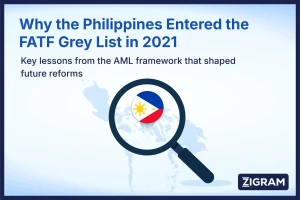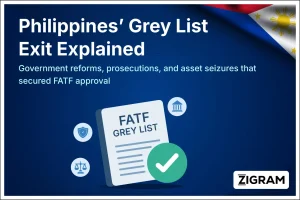Table of Contents
Nepal’s hundi system—traditionally an informal, trust-based method of transferring money—is now evolving rapidly. Digital platforms, social media, and cryptocurrency have transformed this centuries-old mechanism into a modern, high-volume, and opaque financial conduit. This dynamic undercuts formal remittance channels, depletes state revenue, and complicates economic management. In this article, we examine how hundi functions, explore emerging digital transformations, analyse legal crackdowns, and outline solutions—now enriched with insights into digital infrastructure like UPI integration and the inner workings of crypto-hundi.

Understanding Nepal's Traditional Hundi System
Hundi, part of the broader class of informal value transfer systems (IVTS), operates on trust among agents who settle accounts through internal networks rather than physical money movement. Historically, countries like India and Nepal have relied on such systems because of their ubiquity, speed, and community roots—even if largely unregulated.
Why Hundi Still Appeals to Migrants and Informal Workers
Hundi offers rapid and cost-effective remittances:
- Speed: Transfer times typically range from the same day to a few days—faster than formal banks.
- Cost-efficiency: Attractive exchange rates and low transaction fees save small remitters significant sums.
- Accessibility: Rural migrants and informal-sector workers often lack formal banking access. Hundi agents fill the gap.
Digital Hundi in Nepal – From Social Media to Cryptocurrency Networks
Social Media and Messaging Platforms in Hundi Operations
Hundi has migrated onto digital terrain—launched via WhatsApp, Facebook, Telegram, SMS, or bespoke apps. Agents now advertise services online, accept mobile money or crypto transfers, and coordinate payouts—all without physical contact.
The Role of Cryptocurrency in Modern Hundi Transactions
Crypto-hundi blends traditional methods with blockchain technology for stealth and scale::
- Payment by Sender: Either cash to agents or direct crypto transfers (e.g., USDT on platforms like Binance).
- Offshore Settlement: Agents match incoming cryptocurrency flows with local liquidity—eliminating cross-border cash movement.
- Local Payout: Recipients receive cash in Nepal (often within hours) from trusted interceptor networks.
- Record-Keeping: Transactions are logged—some cases revealed detailed ledgers and crypto wallet trails.
Regulatory Landscape, Legal Crackdowns and High-Profile Hundi Cases in Nepal
Nepal has outlawed hundi under multiple legal frameworks:
- Muluki Criminal Code (Section 125-A, 2017): Bars unauthorised foreign exchange operations—punishable by imprisonment and asset forfeiture.
- Money Laundering Prevention Act (2011) and Organized Crime Act (2013): Add further enforcement tools.
Recent years have seen a series of high-profile legal interventions that illustrate both the scale and digital sophistication of hundi networks:
The Rupesh Shrestha Case – Nepal’s Largest Digital Hundi Network
- In January 2024, the CIB raided Shrestha's home, uncovering ledger entries totaling approximately NRs 1.985 billion in one file (“John Robert”) and NRs 27.55 million in another (“Ren Baker”), covering hundi transactions between Nov 2022 and Nov 2023. Cryptocurrency records were also found.()
- The case revealed a sprawling operation blending traditional hundi with crypto and digital record-keeping.
The 17-Person Syndicate and NRs 300 Billion Money Laundering
- On January 24, 2025, Kathmandu District Court received a case against 17 individuals, including Bimal Poddar, allegedly handling around NRs 300 billion via hundi, cryptocurrency, and digital platforms. The prosecution seeks NRs 286 billion in compensation under the NRB Act and the Prevention of Organized Crime Act.
- Detailed accounting shows Rupesh Shrestha alone facilitated NRs 200 billion, with NRs 171.62 billion from crypto wallets, NRs 2.26 billion from hundi ledgers, and NRs 14.74 billion via CashApp. Other accused individuals similarly displayed massive digital footprints.
Smaller-Scale Arrests Highlight Activity Diversity
- August 2025: Four individuals arrested in Kathmandu for hundi-related transactions via cryptocurrency, with NRs 60 million linked to crypto trades.
- March 2025: Two youths in Nawalparasi West detained with NRs 1.2 million in cash suspected to be hundi proceeds. July 2025: Three individuals in Parsa prosecuted under Section 125-A for illegal transfers totalling NRs 2.828 million.
- May 2025: Arrests in Bhairahawa (Rupandehi) recovered over NRs 2.5 million from three suspected operators.
- Mid-2025 (Madhesh Province): Repeated arrests across Parsa, Rautahat, and Sarlahi, with cumulative seizures ranging in the millions of rupees, underscore persistent cross-border hundi operations.
Economic and Policy Implications of Hundi on Nepal’s Financial System
- Fiscal Leakage: Informal systems divert large volumes from formal remittance statistics and foreign exchange reserves.
- Policy Blind Spots: Without visibility into hundi flows, macroeconomic planning suffers.
- Regulatory Strain: Intersecting digital innovation with illicit finance pressures Nepal’s institutions.
- Reputation Risks: Sustained hundi networks prompt FATF scrutiny and international concern.
Strengthening Nepal’s Financial Future with UPI and AML/CFT Policies
How UPI Integration is Transforming Nepal’s Digital Payments
Nepal’s embrace of UPI marks a major step toward formal financial digitalisation:
- In March 2024, NPCI International (NIPL) partnered with Nepal’s FonePay to launch cross-border UPI Person-to-Merchant (P2M) QR payments.
- By mid-2024, Nepal recorded over 100,000 UPI transactions totaling Rs 250 million, spanning all 77 districts.
- NPCI also teamed with Nepal SBI Bank to operationalise RuPay cards in Nepal.
- The UPI-NPI framework was formalised via a Terms of Reference signed between RBI and Nepal Rastra Bank in February 2024.
Why UPI is Transformative
- IInteroperability: Virtual Payment Addresses (VPAs) simplify transactions—no account or branch specifics required.
- Merchant Empowerment: Small vendors can receive digital payments using simple QR codes—broadening cashless adoption.
- Cross-border Convenience: Indian visitors in Nepal and Nepalis in India can transact seamlessly and legally using UPI.
Challenges Remain
- Connectivity & Literacy Gaps: Rural regions face internet and awareness barriers.
- Fragmented QR Ecosystem: Multiple QR standards (FonePay, NepalPay QR, ConnectIPS) hinder seamless usage.
- Global Wallets Not Yet Supported: Tools like Apple Pay and Google Pay remain unavailable officially.
Policy Recommendations For Complete AML/CFT Against Hundi Operations
Strengthen Digital Infrastructure
- Expand UPI-NPI integration to allow P2P and merchant transactions across India-Nepal, with higher limits and low cost.
- Ensure rural access via mobile-friendly platforms and supports for low-literacy users.
- Prioritise border districts and migrant origin hubs for first-mile acceptance.
- Shared outage dashboards; uptime SLAs for PSPs/switches.
- KPIs: Uptime percentage, rural merchant density, cross-border P2M/P2P volumes.
Reform Fees & Incentives
- Lower or subsidise transaction charges to compete with hundi’s cost advantages.
- Time-bound MDR relief for micro-merchants; remitter rebates for first 5 cross-border taxation.
- Tiered limits for verified users to retain AML comfort.
- KPIs: MDR effective rate, merchant churn, average ticket size.
Upgrade Enforcement
- Build crypto forensic capabilities and monitor digital platforms proactively.
- Use intel from past raids to disrupt key syndicates.
- Joint taskforce: FIU, CIB, NRB, PSPs, exchanges; typology sharing every quarter.
- Targeted takedowns: on-ramp/off-ramp mules; ad-hoc platform scraping for hundi ads.
- KPIs: Mule closures, on-ramp CTR to SARs, successful prosecutions.
Boost Financial Inclusion
- Leverage microfinance, postal networks, and cooperative banks to widen formal access.
- Zero-cost basic accounts bundled with remittance receipt; agent commissions tied to active use.
- KPIs: New-to-digital users, active 90-day wallets, remittance-to-savings conversion.
Educate & Build Trust
- Raise awareness of risks associated with hundi—especially crypto versions.
- Offer remittance-linked saving or investment incentives to migrants.
- Migrant-route campaigns (airports, buses) + diaspora associations; scam-simulator demos.
- KPIs: Awareness uplift, scam-reporting rate, percentage remittances via formal rails.
Align with Global Standards
- Strengthen AML/CFT compliance to alleviate FATF greylisting pressures.
- Risk-based CDD/KYC refresh; real-time screening; STR feedback loops to PSPs.
- KPIs: STR quality/closure time, audit findings, FATF assessment deltas.
Conclusion
Nepal stands at a crossroads. On one path lies the digital hundi network – fast, diffuse, and opaque; on the other, emerging digital payment systems like UPI—transparent, scalable, and compliant. Bridging from informal to formal requires bold investments in infrastructure, inclusive policy making, smart enforcement, and rebuilding public trust. Only then can Nepal reclaim remittances as a lifeline, not a side-channel.
Sources
-
Information on Hundi – (Wikipedia)
-
Nepal-India Cross Border Payments with UPI – (IBEF)
-
UPI Adoption in Nepal – (Technology Khabar)
-
Information on UPI – (Wikipedia)
- Hundi-Related Legal Cases – (Online Khabar, My Republica, The Kathmandu Post, Nepal News)
- #GENIUSAct
- #Stablecoins
- #AML
- #FinancialCrime
- #Compliance
- #CryptoRegulation
- #FinCEN
- #SanctionsCompliance
- #RegTech
- #AntiMoneyLaundering
- #DigitalAssets
- #FinancialSecurity







